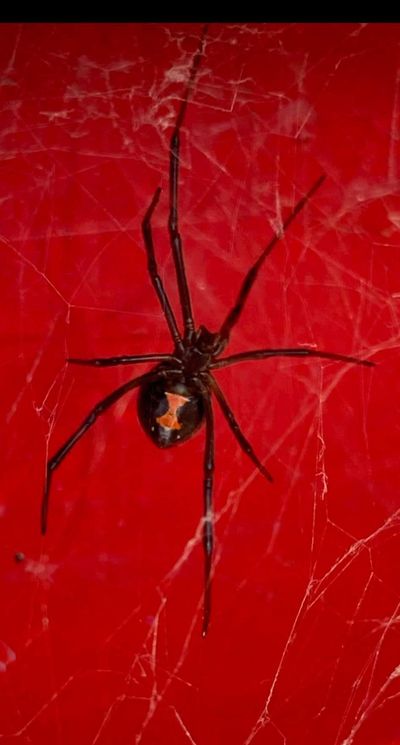Misunderstood black widow lives in a dark, secluded spot near you

As leaves crunch under our feet, darkness descends earlier each day and Halloween draws near, spider shaming is on the rise.
This time of year in particular, spiders are maligned as ugly, dangerous and frightening.
Scary decorations of big black arachnids and gauzy webs cast images on lawns, in store displays and haunted houses. Overblown media reports of human-spider encounters escalate, where words like “nightmare,” “terrorize” and “invasion” get tossed about.
Rating high on the scare-o-meter are black widow spiders. With their infamous hourglass marking and supposedly deadly bite, they’re among the most feared and loathed spiders in North America. And guess what? They live here in the Inland Northwest. Chances are, you’ve walked past one and never knew it.
Black widows, like most spiders, are caught in a web of misinformation, said Rod Crawford, arachnologist with the University of Washington’s Burke Museum. Despite their fearsome reputation as fast-moving stalkers that kill humans with a single bite, black widows are actually timid and want to be left alone, he said.
Although a bite from a black widow can be harmful to humans, it’s typically done in self-defense, he added. What’s more, its toxin is not nearly as deadly as many people believe.
“I’m not aware that any human in the U.S. has actually died from the effects of a proven black widow bite in many years,” he said.
In fact, of the 1,866 black widow bites reported to the American Association of Poison Control Centers during 2013, only 14 resulted in severe symptoms and there were no deaths, according to the agency.
Which isn’t to say that if bitten, you should shrug it off. A black widow’s venom contains neurotoxins that target the nervous system and there’s no way to know if you’ll develop a little localized swelling and redness or spasms and tremors. Seek medical attention and, if possible, bring the spider with you, the Washington state Department of Health advises on its website.
Speaking of Washington state, the species that lives here is the Western black widow, or Latrodectus hesperus, Crawford said, and it is among three black widow species found in the United States. Most abundant in the Columbia Basin area, the Western widow prefers dry environments where it builds webs in dimly lit, undisturbed areas near the ground such as abandoned rodent holes, corners of sheds and the underside of woodpiles, ledges and rocks.
Each year, entomologist Richard Zack of Washington State University fields five to six calls from residents who have stumbled upon the Western black widow spider, he said, adding that only the adult female is deep black in color with a red or orange hourglass marking on the abdomen. In contrast, adult males are typically brown or gray with pale reddish or white bands.
Black widows are “not a spider that wanders about in the open,” he said, and tend to be discovered when humans disrupt their secluded webs.
Let’s say you’re straightening your firewood pile at the side of the house. If a black widow gets caught between your hand and a piece of firewood, “it will defend itself,” Zack said.
“The take-home message is that when you are working in the yard or in a job where you are lifting and moving a lot of stuff that’s been in close proximity to the ground, wear a pair of leather gloves to protect yourself,” he said.
Both Zack and Crawford have handled hundreds of spiders in the course of their work. Not only have they never been bitten by a black widow spider, but they don’t know anyone who has, they said.
“It does not deserve its reputation,” Zack said, “although I am not volunteering to get bitten to prove it.”
Contributing to the widow spider’s fearsome reputation is its common name, derived from the widespread belief that the female eats the male after mating. The broadly applied term “black widow,” is actually a misnomer, Crawford said. Most of the world’s 31 species, including our region’s Western widow, rarely, if ever, kill their mates and consume them. “It’s the exception, not the norm,” he said.